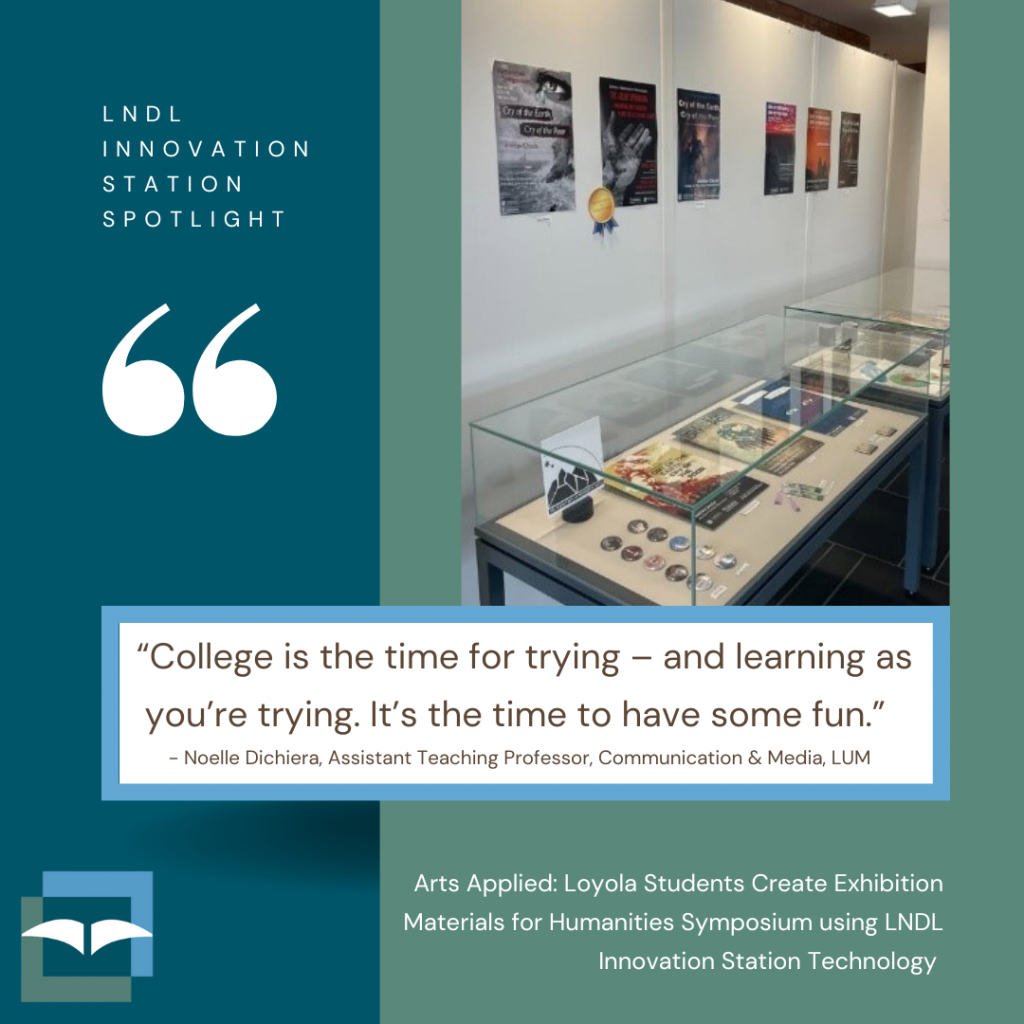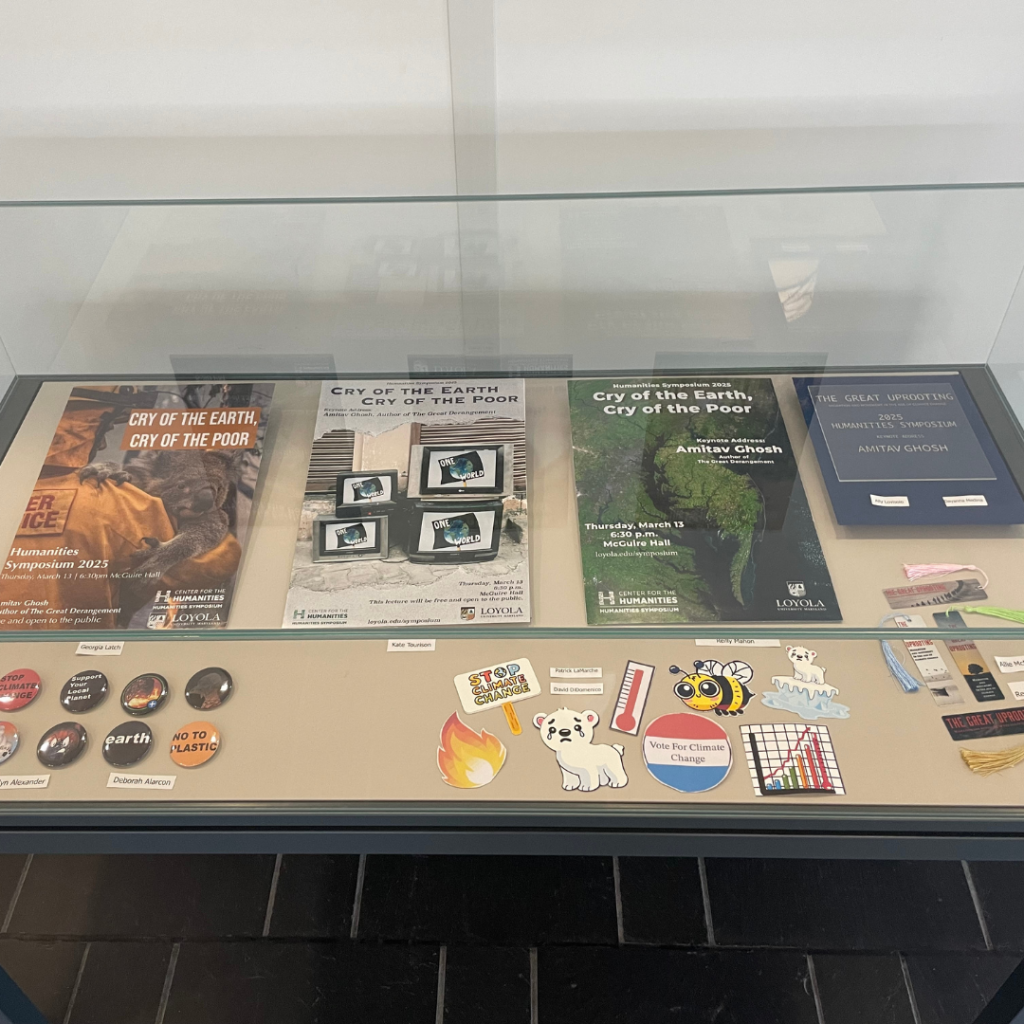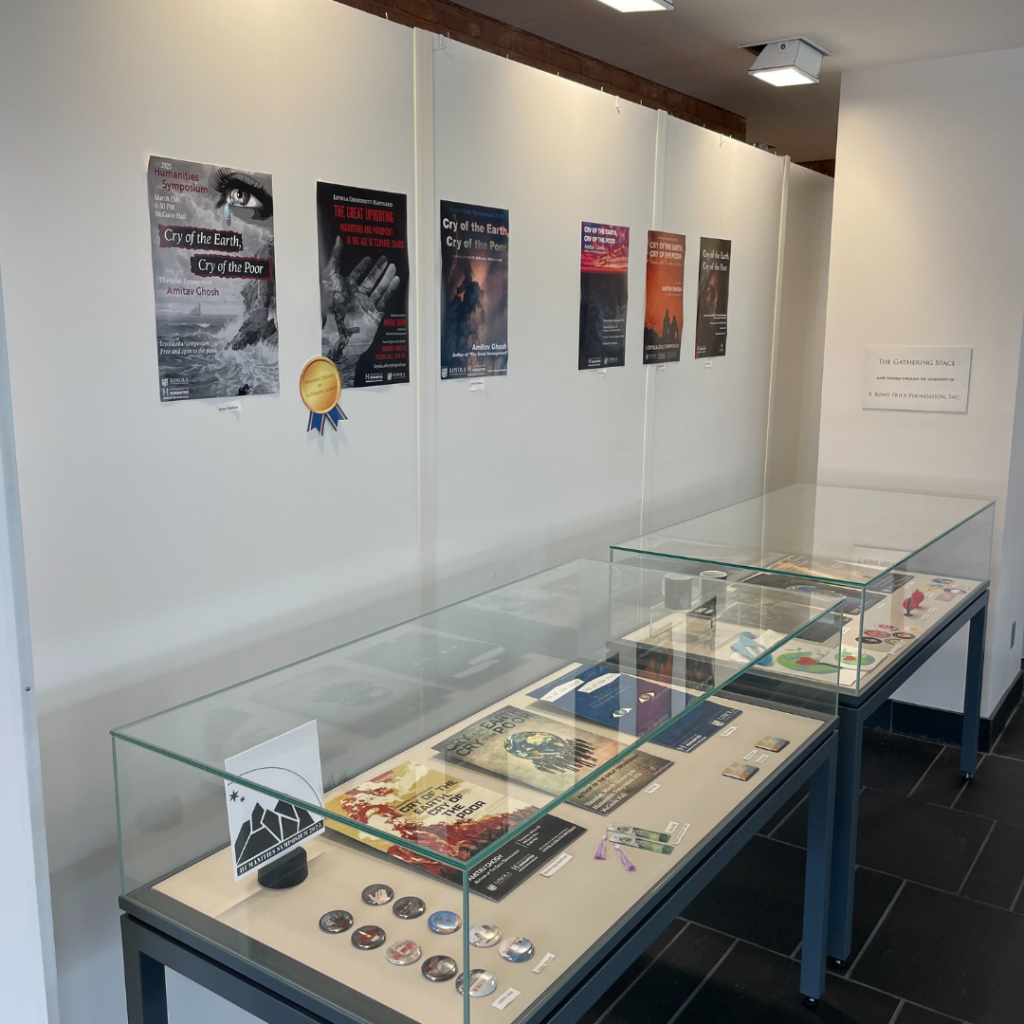
For Noelle Dichiera, Assistant Teaching Professor in Loyola University Maryland’s Communication & Media department, incorporating LNDL’s resources into her work comes naturally. Dichiera could regularly be found at the Library while completing her Bachelor of Arts in Studio Arts & Photography at Notre Dame of Maryland University. Now, with her Graphics I and Graphics II classes—both of which are digital media specialization courses in communication and media program—she works with LNDL’s Technology Services staff to ensure students see that the Library’s Innovation Station is available and accessible to them as well.
“In previous years, we would bring students on tours of the Innovation Station, and many of them were surprised and excited by the technology, but also a little intimidated,” Dichiera said.
She then had the thought that incorporating LNDL’s technology into her classes could help make these tools seem less intimidating. “Students engage with the technology more when it’s part of an assignment, and it makes it seem accessible to them,” she explained.
And what better way to incorporate Innovation Station tools into classwork than through a partnership with Loyola’s Humanities Symposium? The Humanities Symposium, which began more than twenty years ago, includes a week-long series of events related to a particular text for students, faculty, and the Baltimore community. This year’s Symposium focused on Amitav Ghosh’s book, The Great Derangement, which examines the climate crisis. Ghosh gave the Symposium’s keynote address, “The Great Uprooting: Migration and Movement in the Age of Climate Change,” in March 2025.
Over the last three years, students in Dichiera’s Graphics I and Graphics II classes have contributed to the Symposium by creating posters and promotional materials, which LNDL has then displayed in the Library’s Gallery. Students use Innovation Station tools, such as the large-format printer, 3D printer, button maker, and materials for etching and sublimation printing, to create the exhibit materials.
“The Humanities Symposium posters and Innovation Station collateral materials are wonderful portfolio builders for students applying for internships or jobs in communication and design fields,” Dichiera said. “The exhibit elevates their work because they know it will be on display for the Loyola/Notre Dame community. It’s a wonderful opportunity for their work to be recognized and appreciated by the community.” Students also gain valuable curatorial experience by working with Jenny Kinniff, Head of LNDL Archives & Special Collections, to organize the exhibition.
Beyond the Symposium project, Dichiera spoke to the LNDL Innovation Station’s wide range of applications, noting that it opens new avenues for applying the arts. Even her students who do not go on to work in design fields learn a lot by using it. “They see that the technology is really not as daunting as they may have thought, and they are really proud when they see their designs come to fruition. Seeing your design on a computer screen looks really different compared to when it’s printed out on a poster, on a mug, or etched in glass.”
She shared that after her class, many students gain the confidence to use LNDL’s technology for their own personal projects, and LNDL’s Technology Services staff help make the process as accessible as possible.
“Clara [LNDL Technology Resources Assistant] and Youlanda [LNDL Digital Technology Web Supervisor] are wonderful –they are both so helpful and patient with the students,” Dichiera said. “They are very accommodating and both full of lots of wonderful suggestions on how we can improve our projects.”
And per Dichiera, having spaces like LNDL that encourage students to learn and try new things in a supportive environment is essential to any college experience.
“I’m so appreciative of the Library staff and that we have access to this technology,” she said. “It’s really important that students experiment, because college is the time to experiment. College is the time for trying – and learning as you’re trying. It’s the time to have some fun.”
Stop by the LNDL Gallery to see the 2025 Humanities Symposium Student Poster Exhibition before it closes on Thursday, April 3!

